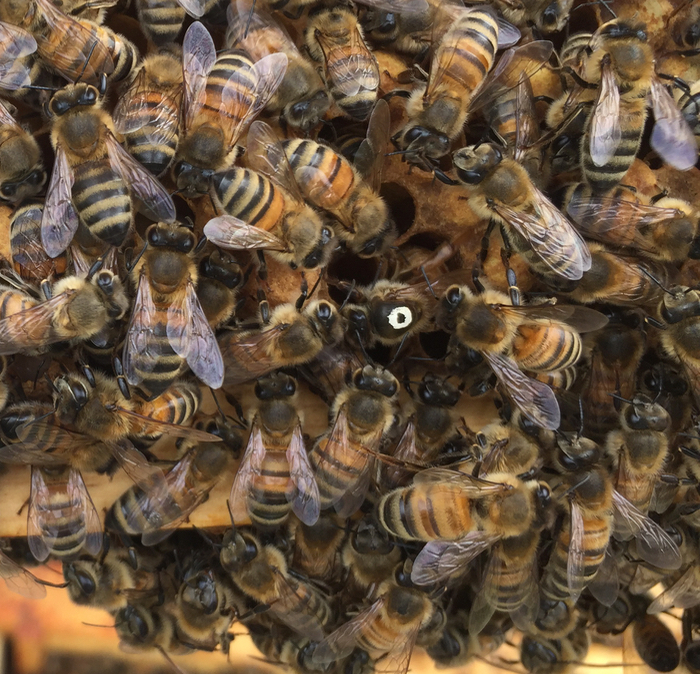These bees are going through a TON of sugar; we have refilled their feeders 11 times with 1:1 sugar syrup (1 cup sugar : 1 cup water mixture), but they are drawing out comb nicely, are storing their sugar syrup, and are certainly gaining weight.
Bee-Stuff weights are now up over 100 lbs; very nice! (Wish we would not have stopped feeding them and been a bit more scientific about stopping the initial feeding).
As far as feeding goes, our experience here is that count on needing 2.5 lbs of sugar per frame in order to help a new colony build out comb.
Now, look at the queen cell below (from 3 June 2017); this came from our “Yellow” hive.
We sought much advice, and decided that if we saw more (after destroying the last batch), we would try and get the bees to think they had swarmed, by taking the frames with the queen cells, pollen, honey, and bees, and put them into an 8 frame Nuc, and let the queens emerge, then putting new frames into Yellow to give them more room.
We might have missed the boat (but the story ends well)… We were inspecting and noticed that Yellow seem to have a lot less bees. I checked the Broodminder weight, and saw that 30 minutes after our last week’s inspection, we saw an 8 lb drop in weight, followed by a 6 lb gain in weight over the next day; sure looks like they swarmed out of Yellow.
Our plan was to inspect on Saturday, look for evidence of no queen, and plan on getting a new queen (or see if Blue is creating queen cells).
Much to our surprise, we found our Yellow queen, and capped queen cells (again). So, we enacted our Nuc plan.
We talked about our experience with some old-time beekeepers, and the puzzle as to why we were observing what we did; they figured what must have happened is that they swarmed, and then came back (they had seen this happen before); I think we are very lucky.
Now we just hope it’s not too late in the season for this Nuc to start running with a new queen. We’ll feed the Nuc and basically not touch it for about 3 weeks (~7 days for a queen to emerge from a capped queen cell, ~ 5 days to fly and mate, ~ 3 days to start laying).












